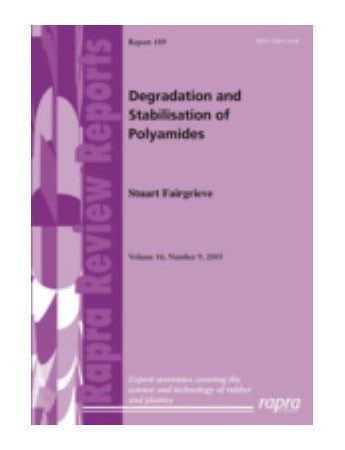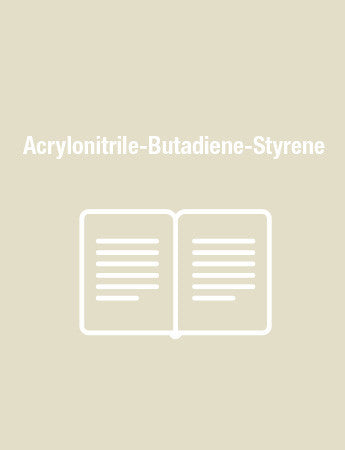Degradation and Stabilisation of Polyamides
Linear polyamides are one of the more important classes of polymeric materials, with wide application in the fields of fibres and plastics. In general, these polymers may be synthesised in one of two ways, either by the reaction of dicarboxylic acids (or their derivatives) with diamines, or from specific amino acids or their cyclic derivatives the lactams. These two approaches result in two types of polyamides.
The polyamides are usually referred to as condensation polymers. The polyamides thus differ markedly in their manufacturing process from the polymerisation methods used to manufacture addition polymers such as styrenics and polyolefins.
The properties of polyamides when fabricated into articles of manufacture are considerably affected by the amount of crystallinity present. Unlike other polymer classes, the degree of crystallinity of the polyamides can vary by as much as 40%, depending on how the fabrication is carried out.
A great deal of research has been carried out into the degradation of PA, but the materials and test conditions used vary tremendously, even for a single polymer such as Nylon 6, therefore it is not really surprising that many such studies differ considerably in both results and in their interpretation. This report looks at some of the methods used to stabilise the polyamides and also examines how they degrade and how this can be prevented by stabilising the molecule.
This review will be of interest to everyone who works with or studies polyamides. It is accompanied by around 400 abstracts compiled from the Polymer Library, to facilitate further reading on this subject. A subject index and a company index are included.
The polyamides are usually referred to as condensation polymers. The polyamides thus differ markedly in their manufacturing process from the polymerisation methods used to manufacture addition polymers such as styrenics and polyolefins.
The properties of polyamides when fabricated into articles of manufacture are considerably affected by the amount of crystallinity present. Unlike other polymer classes, the degree of crystallinity of the polyamides can vary by as much as 40%, depending on how the fabrication is carried out.
A great deal of research has been carried out into the degradation of PA, but the materials and test conditions used vary tremendously, even for a single polymer such as Nylon 6, therefore it is not really surprising that many such studies differ considerably in both results and in their interpretation. This report looks at some of the methods used to stabilise the polyamides and also examines how they degrade and how this can be prevented by stabilising the molecule.
This review will be of interest to everyone who works with or studies polyamides. It is accompanied by around 400 abstracts compiled from the Polymer Library, to facilitate further reading on this subject. A subject index and a company index are included.
1. Background
2. Degradation
2.1 Thermal Degradation
2.2 Thermal Oxidation
2.3 Photolysis
2.4 Photooxidation
2.5 Hydrolysis
2.6 Deliberate Degradation
3. Stabilisation
3.1 Metal-Based Stabilisers
3.2 Hindered Phenols
3.3 Aromatic Amines
3.4 Hindered Amines
3.5 Miscellaneous
4. Comments
5. Additional References
6. Abbreviations and Acronyms
References from the Polymer Library Database
Subject Index
Company Index
2. Degradation
2.1 Thermal Degradation
2.2 Thermal Oxidation
2.3 Photolysis
2.4 Photooxidation
2.5 Hydrolysis
2.6 Deliberate Degradation
3. Stabilisation
3.1 Metal-Based Stabilisers
3.2 Hindered Phenols
3.3 Aromatic Amines
3.4 Hindered Amines
3.5 Miscellaneous
4. Comments
5. Additional References
6. Abbreviations and Acronyms
References from the Polymer Library Database
Subject Index
Company Index
Stuart Fairgrieve entered the field of polymers and plastics with Nairn Floors, Kirkcaldy, working on PVC plastisols. Leaving to attend St. Andrews University, he was awarded an Honours degree in Chemistry, and went on to carry out academic research at the same institution. He obtained a M.Sc. in Polymer Chemistry and subsequently a Ph.D. in Polymer Physics. He entered industrial research with Cookson Group plc, becoming senior researcher in plastics with the central research organisation of this company. In 1996, he set up SPF Polymer Consultants. He is the author of a number of academic papers, and the principal inventor of various current US patents.




